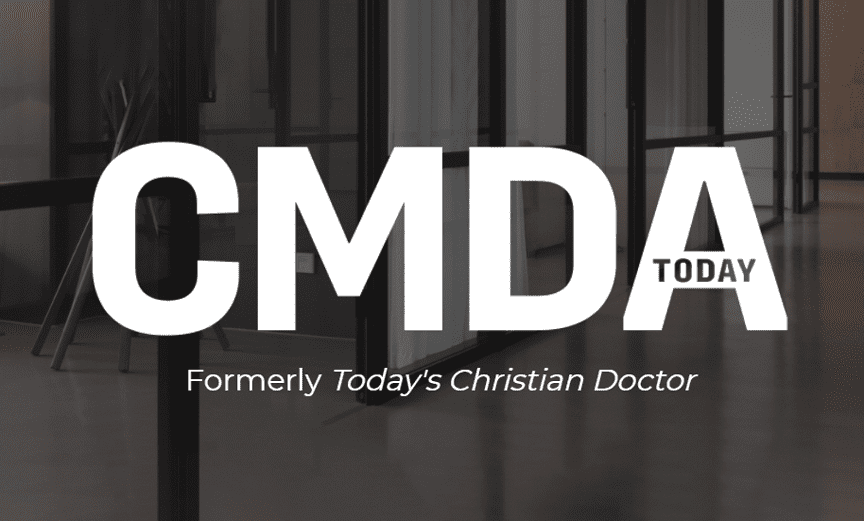
Learning from History: The Case Against Assisted Suicide
It has been said that the best way to learn about our future is to look to our past. A historical reflection on the actions of those who have gone before us can both guide us toward monumental successes and deter us from repeating colossal mistakes. A glance to history may reveal progressive social and technological advancements, yet it also affirms that the basic principles of a man’s heart remain unchanged. As Proverbs reminds us, “There is a way that seems right to a man, but in the end it leads to death” (Proverbs 14:12).
It has been said that the best way to learn about our future is to look to our past. A historical reflection on the actions of those who have gone before us can both guide us toward monumental successes and deter us from repeating colossal mistakes. A glance to history may reveal progressive social and technological advancements, yet it also affirms that the basic principles of a man’s heart remain unchanged. As Proverbs reminds us, “There is a way that seems right to a man, but in the end it leads to death” (Proverbs 14:12).
One such example of this is physician-assisted suicide. I was first exposed to this controversial issue in my freshman year of college. As a senior in college, I took a class on the Holocaust and saw how this idea was used in the horrible events that occurred leading up to and during World War II.
I joined CMDA in 1993 while I was in medical school, and during that time I attended a conference where we learned about ethics in medicine and discussed the topic of euthanasia. It’s a topic that has stayed with me throughout my career, and I’ve been a practicing hospitalist and palliative medicine specialist for the last 20 years. Today, I teach medical students and residents, and I continue to be surprised by how many younger students simply accept physician-assisted suicide as an alternative aggressive treatment of underlying symptoms.
This subject needs more attention and more discussion among healthcare students and healthcare professionals before more states legalize it and allow physician-assisted suicide to be a legal practice.
I made a career shift to palliative medicine after witnessing my father benefit from the end-of-life care he received. After making this shift, I realized that while many of the treatments I had previously administered as a hospitalist may have prolonged life, they were not increasing the quality of life. The evidence supports this conclusion. Approximately 30 percent of Medicare’s expenditures occur in the patient’s last year of life. Of these expenditures, few improve the quality of life, nor do they extend the duration of life.[1] Palliative care stands as an effective way to impact quality of life, and many clinicians in the medical field are taking note. In recent years, palliative medicine has become one of the fastest growing medical specialties. Much of this growth can be attributed to the significant hospital cost savings usually associated with palliative care consultation programs that reduce a large portion of end-of-life medical expenditures.
While palliative medicine has proven to be the best possible outcome in difficult end-of-life situations, alternatives are being proposed. I attended a lecture entitled “New Treatment Modalities in Difficult Pain Patients” at a recent palliative medicine annual conference. The presenter was a renowned physician and program director at a respected medical institution. I was not expecting a controversial lecture and was actually searching for new interventions to manage symptoms such as severe pain, recurrent nausea and intractable seizures. Early in the lecture I was astonished when physician-assisted suicide was presented as a last resort option for treating several of these symptoms. Our lecturer offered that assisted suicide was generally accepted and was legalized in some states.
One of the pain management principles I learned in my training and continue to pass on to my palliative medicine and oncology fellows is the use of gradual increases in opioids (such as morphine) as a safe and effective way to manage symptoms. If the opioid is initiated at a low dose and gradually increased, a therapeutic dose is achieved, sans respiratory depression. On the other hand, if you begin with exceedingly high doses of morphine, you may not only control the pain, but you also may “shorten the patient’s hospital length of stay by the principle of double effect,” per the lecturer. He said this in jest, eliciting laughter among the attendees. But it was an upsetting assertion that continues to disturb me today. The shortening of lengths of stay via high dose morphine is no laughing matter, and the principle of taking life in such a way is not a new concept.
In 1938, post-World War I Germany, a country that was already deeply in debt, was experiencing soaring healthcare costs, and thus ensued a desperate search for cost containment in healthcare. At the time, the Nazi Party leaders consisted of physicians, attorneys, professors and scientists. These intellectual elites possessed a deep love for their country and a desire for a stronger Germany. Joseph Goebbels, a close friend of Adolf Hitler and appointed head of the “Reich Ministry of Public Enlightenment and Propaganda,” utilized media outlets to influence the general public and lawmakers. One such propaganda effort was the publication of an emotional letter from a father pleading for lawmakers to legalize assisted suicide. The letter regarded assisted suicide as an act of compassion that would allow his son to be relieved of his painful terminal illness. This and other propaganda efforts influenced the German legislature. At that time in Germany, assisted suicide was illegal and it brought about the same penalty from the judicial system as other forms of homicide. But in January 1939, the German legislature passed a euthanasia decree. This decree streamlined the administration of physician-assisted suicide, requiring only the signatures of two licensed physicians. Initially, morphine administered in high doses was the preferred method to terminate life. Eventually, carbon monoxide was found to be more cost effective and have a higher “success” rate.
Assisted suicide in pre-WWII Germany initially began with the terminally ill. As government officials recognized the cost savings associated with euthanizing these patients, assisted suicide measures extended to the mentally ill, those with Downs Syndrome and those in the cognitively impaired wards of the state. Such practice brings to mind the cancer research I completed during my undergraduate studies. Prior to removing the spleens of rats to assess their response to chemo, we euthanized our lab rats using the very same gas chamber methods outlined in Hitler’s euthanasia decree.
In two short years, six hospitals installed gas chambers and assisted suicide ended the lives of a documented 70,273 patients. Psychiatry units were closed, and the healthcare budget was significantly reduced.[2] Difficulties arose in transporting patients to the euthanasia centers. A plan was proposed to extend “treatment” to patients unable to travel great distances. In December 1941, three mobile vans were transformed into carbon monoxide chambers by the Reich Main Security Office. These mobile units rectified the access problem of stationary gas chambers. As the practice grew, the staff physician was required to see increasing numbers of patients per day. To streamline the process, the covering physician was required to triage each patient with a list of more than 60 fatal diseases to keep their program within its guidelines. A “mercy death” was prescribed for all patients with a diagnosis on the triage list.[3] With callous disregard for life, the Nazi leaders sent more than 10 million people to a government-sponsored genocide. I believe that such a disregard for life began with the slippery slope of assisted suicide that placed the containment of healthcare costs ahead of the sanctity of human life. Advocates of physician-assisted suicide assert that it would save millions of dollars in the healthcare budget.[4]
We find similarities of this today. The Donohue-Levitt hypothesis asserts that the legalization of abortion has made a significant contribution to crime reduction. The hypothesis suggests that unwanted children or those children born to parents who lack the financial means to support them are more likely to become criminals. Abortion advocates promote this data as proof that abortion benefits the mother as well as society as a whole. This hypothesis has eerie similarities to the gas chambers installed in mental hospitals during pre-WWII Germany.
While the way of a man may seem right, God’s word tells us the way of the cross will lead to life (Matthew 16:24-25). While a turn toward history will reveal the way of man, it also reveals the way of the cross. Though the majority of Roman citizens enjoyed the blood sport of the Colosseum games, it was not a fair sport for the marginalized citizens of Rome who were fed to the lions for entertainment. In 402 AD, a young monk named Telemachus went to the Roman Colosseum to see the gladiatorial events and share the gospel with those in Rome. While watching the gladiators fight to the death, Telemachus was sickened and shocked at what he saw and took a stand. He repeatedly yelled, “In the name of Jesus, stop!” He was killed by one of the gladiators for sport as the crowd cheered. As he lay lifeless, the realization of what had happened gripped the crowd as they each left the Colosseum in silence. This was the very last gladiator game at the Colosseum. Shortly afterward, the emperor issued an edict forbidding any future games of war within the Roman Empire.
Protecting the beauty and sanctity of life is the mandate for those of us entrusted to deliver healthcare. The Hippocratic Oath clearly says, “I will never give a deadly drug to anyone if asked for it or will I make a suggestion to that effect.” More than 2,000 years after the writing of this oath, we have the best pain management, symptom control and depression treatments at our disposal. Yet, the desire to decrease the cost of healthcare presents options that place the sanctity of life in peril. As healthcare leaders and healthcare professionals, we must adhere to the foundation that all life is sacred and insist that laws and practices are in place to protect the lives of the vulnerable. May we all be like Telemachus—slow to bend to popular opinion and quick to protect the lives of God’s image bearers.
Get Involved
CMDA is a leading voice in the battle against the legalization of physician-assisted suicide. For resources and the latest information about the dangers of physician-assisted suicide to healthcare and your right of conscience, visit www.cmda.org/pas. If you want to get involved fighting against physician-assisted suicide in your state, contact [email protected]. About the Author
Kelley Myers, MD, is an academic hospitalist/palliative medicine specialist who is an Associate Professor at the University of Tennessee and Hospitalist at the VA Medical Center in Memphis, Tennessee. As a medical student, Kelley was involved in CMDA and Medical Campus Outreach in Augusta, Georgia. After completing a family medicine residency in Greenwood, South Carolina, he taught at the Valley Baptist Family Medicine Program in Harlingen, Texas for five years. After moving to Memphis in 2005, he transitioned his practice into hospitalist medicine and palliative medicine consultation. He is involved in student and resident mentoring and teaching, by focusing on the roles of Christian healthcare professionals in a secular society. Kelley and his wife Julie (an occupational therapist) have two sons and are active in their local CMDA chapter and serve on the local board.
[1]Patrick Alguire, MKSAP16, (Philadelphia, American College of Physicians, 2012), 28.
[2] Sandner, Peter (July 1999). Die “Euthanasie”-Akten im Bundesarchiv. Zur Geschichte eines lange verschollenen Bestandes [The ‘Euthanasia’ Files in the Federal Archives. On the History of a Long Lost Existence] (PDF) Vierteljahrschefte für Zeitgeschichte – Institut für Zeitgeschichte. Munich. 47 (3): 385–400. ISSN 0042-5702.
[3] Lifton, R. J. (1986). The Nazi Doctors: Medical Killing and the Psychology of Genocide. New York: Basic Books. ISBN 978-0-465-04904-2. Archived from the original on 3 September 2006.
Figure 1: World War II Today. 2011. Retrieved April 22, 2013. Source: Office of the United States Chief Counsel for Prosecution of Axis Criminality: Nazi Conspiracy and Aggression – Washington, U.S Govt. Print. Office, 1946, Vol III, p. 418
[4] Aaron J. Trachtenberg, MD; Braden Manns, MD (January 2017). Cost Analysis of medical assistance in dying in Canada. CMJA. vol 189, (3), p. 101










